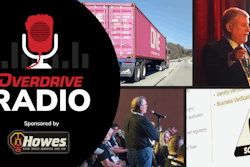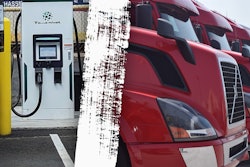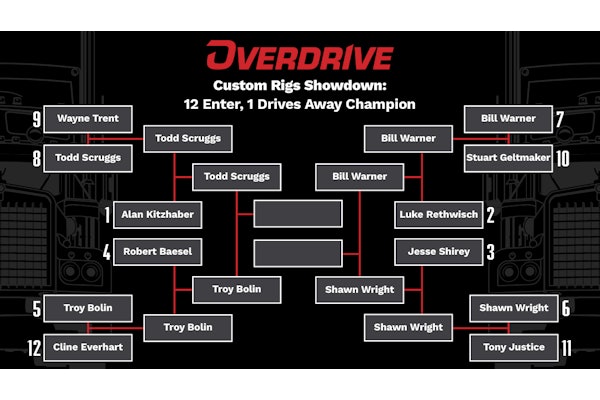Following the Good Friday release by the Environmental Protection Agency of its Phase 3 greenhouse gas emissions regulations final rule, numerous trucking and trucking-adjacent organizations have weighed in on the rule.
As reported Friday, the final rule sets new emissions standards for truck and engine manufacturers covering model years 2027 through 2032. Sleeper tractors will have to see a 6% reduction in CO2 emissions from the current standards with the 2030 model year, 12% in 2031, and 25% in 2032. Other truck configurations have varying standards to meet.
For reactions from the Owner-Operator Independent Drivers Association and the American Trucking Associations, see the original story here.
Since the release of the rule, other industry organizations -- the Truckload Carriers Association, Clean Freight Coalition, Engine Technology Forum and others -- have offered insights into the potential impacts of the final rule. Much of the commentary was critical of the CO2-reduction targets. Despite an expressly "technology neutral" approach taken by EPA in the rule, most stakeholders felt, by and large, the reduction targets simply weren't achievable without significant electric powertrain production and adoption -- an expensive proposition for manufacturers and end users that is itself heavily dependent on power infrastructure development and other factors outside the control of builders and carriers.

TCA President Jim Ward noted that truck and engine makers and carriers themselves have effectively reduced nitrogen oxides (NOx) and particulate matter through the decades-long evolution and implementation of new technologies. While TCA remained committed to being a good steward of the environment, he said, he added that "the journey ahead provides for many alternatives to be considered to lower carbon, such as blended biodiesel, renewable natural gas," and diesel-electric hybrids, "just to name a few to help us bridge the gap to the future. We cannot just sit idly by and watch the implementation of a policy that will have a significant impact on our members’ business.”
[Related: Final EPA Phase 3 rule sets truck CO2-emissions limits]
Jim Mullen, executive director of the Clean Freight Coalition, took similar sentiment even farther, voicing the organization’s opposition to the final rule, despite “a long history of collaborating with federal regulators on sound regulations that support environmental improvements at the right speed” among his group’s members. Mullen called the Phase 3 rule “a regulation that will require the adoption of zero-emissions commercial vehicles at a pace that isn’t possible due to the limits of today’s technology.
“Today, these vehicles fail to meet the operational demands of many motor carrier applications, reduce the payload of trucks, and thereby require more trucks to haul the same amount of freight, and lack sufficient charging and alternative fueling infrastructure to support adoption. … These commercial vehicles are in their infancy and are just now being tested and validated with real-world miles.”
Echoing OOIDA President Todd Spencer’s comments from Friday, Mullen said the rule “will have detrimental ramifications to the commercial vehicle industry, many small and large businesses, commercial vehicle dealers and their customers.”
Mullen urged regulators, “rather than mandating a new technology that carries with it exorbitant costs and operational concerns," to support "lower carbon alternatives to diesel fuel that are currently commercially viable (such as biodiesel and renewable diesel). These lower carbon fuels will allow EPA to make progress on emissions today, while the industry implements longer-term options.”
Forcing a move “to technology that is decades away from being viable at scale will keep older, less environmentally friendly commercial vehicles on the road longer, stunting the carbon reduction progress EPA seeks,” Mullen concluded.
[Related: Cummins readies new diesel engine for 2027]
The Engine Technology Forum, a group dedicated to raising awareness about the current and future role of internal combustion engines, equipment, and fuels, highlighted the benefits of low-carbon renewable biofuels in achieving reduced greenhouse gas emissions, arguing the EPA should adopt a lifecycle-emissions approach to emissions targets that take into account vehicle-production emissions in addition to those that come out of the stacks.
“In a study of 10 northeastern states, it was determined that over the next decade, switching to renewable diesel fuel and accelerating the turnover of the oldest diesel trucks to the newest generation diesels would achieve three times the greenhouse gas reductions at 25% of the cost of a full zero emission vehicle (electric) option,” said ETF Executive Director Allen Schaeffer.
Schaeffer added that, “Ideally, the EPA rules would be based on lifecycle greenhouse gas emissions rather than a tailpipe-only basis.” Using the full life-cycle approach would better benefit the consumer, he said. “There are many paths to reducing carbon and other emissions, including further advancements to internal combustion engines and the use of renewable fuels, and new fuels like hydrogen. We envision a future where truckers can choose whatever technology best suits their needs; battery electric vehicles, hybrid electric vehicles, plug-in hybrid electric vehicles, or advanced gasoline, natural gas, or diesel vehicles.”
Schaeffer also noted that the success of EPA’s rule, despite it being a mandate on manufacturers, largely falls outside the control of the OEMs. “Truckers’ acceptance of zero emission vehicle technologies, the rapid transformation of the industrial base to support widespread electrification, and the establishment of a national charging infrastructure," ETF laid out all that would be required for success on electric vehicle adoption. All of it will "require unprecedented capital investments."
[Related: Oil industry's new category to help with emissions, efficiency]
The Truck and Engine Manufacturers Association (EMA) noted that while it's "committed to a zero-emission future for the U.S. trucking industry," it has concerns with the final rule. EMA President Jed Mandel said, "Long lead times and other actions beyond the control of the manufacturers, and beyond EPA’s control, are needed to assure the infrastructures essential to operating heavy-duty ZEVs are in place, in time."
Mandel noted concerns "that the final rule will end up being the most challenging, costly and potentially disruptive heavy-duty emissions rule in history." He noted that manufacturers have successfully implemented previous EPA emissions standards, which "required manufacturers to comply by developing and implementing advanced technologies to improve engine and vehicle performance. The new GHG Phase 3 rule will require manufacturers to sell a set percentage of ZEVs, which is beyond their own ability to control."
American Truck Dealers President Laura Perrotta, in lodging the ATD's opposition to the rule, pointed out that “less than 1% of commercial vehicle sales today are ZEVs, yet this rule sets overly aggressive electric truck targets on a short timeline that will not result in increased zero-emission truck sales and lowered GHG emissions but will have lasting negative consequences. The technology-forcing regulations and barriers to new-truck sales are enormous and are resulting in only one outcome: new trucks that commercial customers simply can’t afford, cannot reliably charge or utilize, and therefore won’t purchase.”
Echoing Mullen, Perrotta added that the rule will further force “commercial vehicle customers to hold on to existing fleets or purchase used trucks. Having older trucks remain on the road does nothing to save fuel, make our roads safer or reduce GHG emissions.”
The Motor & Equipment Manufacturers Association (MEMA), on the other hand, said it supports EPA’s goals “to improve national air quality through improvements to heavy-duty vehicles and applauds the agency for incorporating improvements to the rule as advocated by MEMA.”
MEMA added that the final rule’s inclusion of “a variety of propulsion technologies … should allow for more technologies to achieve compliance.”
[Related: 'Massive' rate increase needed to finance $1 trillion electric trucking conversion]









